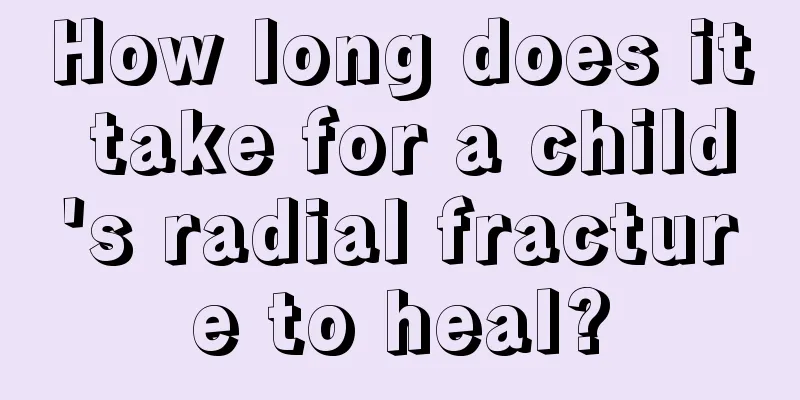Will a child suffering from purpura have kidney damage when he grows up?

|
Although some diseases often occur in children, their effects can easily accompany children throughout their lives if they are not treated correctly. For example, some children suffer from purpura due to their own or other reasons, and this disease may have a certain impact on the children when they grow up. Purpura nephritis is the most easily caused disease. Let's see what is going on. Regarding purpura nephritis, the early manifestation is reflected in urine routine The kidney is the human body's blood filtration organ and is composed of about 2 million glomeruli. A glomerulus is a small blood vessel ball. The essence of kidney damage is that 2 million small blood vessel balls have become inflamed, and red blood cells and protein leak into the primary urine. Red blood cells and protein are detected in the urine. There are different clinical reports on the incidence of purpuric nephritis. According to urine routine tests, the incidence of abnormalities is approximately 20%-60% (already very high), and some hospitals have calculated it to be about 20%. However, if all patients undergo a renal biopsy, some report that 100% of them have renal damage, but there is a distinction between mild and severe damage. How long does it take for Henoch-Schonlein purpura to affect the kidneys? Purpura nephritis usually lasts between 2 weeks and 2 months, but not all patients with Henoch-Schönlein purpura will develop kidney damage. The probability is not 100%. Regarding the time when kidney damage occurs, problems with urine routine tests usually do not appear immediately after the appearance of skin purpura, but usually appear between 2 weeks and 2 months. Of course, a small number may appear earlier or later. According to statistics, 90% of purpuric renal damage occurs within 2 months and 97% occurs within half a year. That is to say, the first 2 months is the dangerous period for kidney damage caused by purpura, and it is recommended to check urine routine once a week; between 2 months and half a year, check urine routine once every half a month; within 3-5 years, check urine routine once every 1-2 months. Therefore, routine urine tests should not be ignored once no problems are found. Repeated tests are required. If purpura nephritis is diagnosed, will it manifest as gross hematuria? The clinical manifestations of renal damage caused by Henoch-Schonlein purpura are often hematuria, proteinuria, and macroscopic hematuria is also common. There is also purpuric nephritis manifested as acute glomerulonephritis or nephrotic syndrome (accounting for about 6%-7% of purpuric nephritis). In severe cases, acute renal failure may occur. Hypertension may occur alone and is often accompanied by severe renal damage. Hypertension may occur in patients with Henoch-Schönlein purpura, and the purpuric kidney damage may be very severe (be vigilant). |
<<: Can simple purpura in children be cured?
>>: If there is a foreign body in the baby's trachea, be careful of the following symptoms
Recommend
How do teenagers protect their teeth?
In life, we always hear many people constantly si...
What to do if your child has a stuffy nose and snores? Mom has a solution
It is very common for children to have colds and ...
What is the situation of foam in the stool of a two-month-old baby?
We have to metabolize every day. Some abnormal co...
What foods can children choose to eat to replenish kidney deficiency
The best time to nourish the kidney is in winter,...
Why does a 3-year-old child cry when sleeping at night?
If a three-year-old child cries while sleeping at...
How to choose a children's car?
Today's society is progressing and the times ...
What to do if the child has itchy red spots on his body
If a child develops blisters on his body and they...
Why is my baby's stomach growling?
When solving baby problems, you cannot choose imp...
Can babies eat fish when they have a fever and diarrhea?
We all know that fish is a relatively good food, ...
What are the guidelines for treating hand, foot and mouth disease?
Timely treatment of hand, foot and mouth disease ...
Can a nine-month-old baby eat shrimp?
Shrimp has delicious meat and is a kind of seafoo...
Treatment of mumps in children
Mumps is not only a disease that adults are prone...
What medicine should children take for abdominal pain
In our lives, many children are prone to gastroin...
Is it better for girls to develop early or late?
In recent years, precocious puberty and early dev...
Six common items in daily life are dangerous to children
Nowadays people's lives are more colorful tha...









